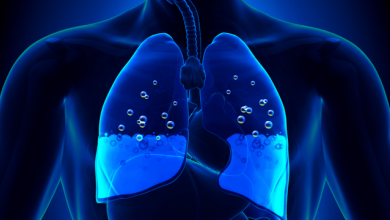Search results
High-density Lipoprotein Cholesterol — The Next Battle Front in the Fight Against Heart Disease
Author(s):
Raif Tawakol
Added:
3 years ago
Article
Author(s):
Giovanni Torsello
,
Konstantinos P Donas
Added:
3 years ago
Stroke is a leading cause of death and disability in the developed world.1 More than 750,000 strokes occur in the US annually,1 and one-third of these patients die during the first few months after their strokes. Acute carotid syndrome (ACS) is defined as a set of signs and symptoms linked to neurological deficits (transient ischemic attack [TIA] or ischemic stroke) caused by carotid occlusive…
View more
Author(s):
Jack Collier
,
Arthur J Labovitz
Added:
3 years ago
The approach to the treatment of a variety of cardiovascular disorders has undergone remarkable change over the past two decades. The use of both percutaneous interventions in patients with acute myocardial infarction and automatic implantable cardiodefibrillators in patients with ventricular arrhythmias represent important examples. The cardiology community is currently in the process of another…
View more
Author(s):
Shamai A Grossman
Added:
3 years ago
Introduction
Congestive heart failure (CHF) is an imbalance in pump function in which the heart fails to maintain the circulation of blood adequately. The most severe manifestation of CHF, pulmonary edema, develops when this imbalance causes an increase in lung fluid secondary to leakage from pulmonary capillaries into the interstitium and alveoli of the lung.
CHF can be categorized as forward…
View more
Author(s):
Christopher R deFilippi
,
G Michael Felker
Added:
3 years ago
Biomarkers have become central to the management of cardiovascular disease, and their potential clinical applications continue to grow. This article reviews galectin-3 (Gal-3), a novel biomarker of fibrosis and remodeling, and its clinical application in heart failure (HF).
Case Studies
Case Study One
A 63-year-old African-American female presents to the emergency department with acute dyspnea…
View more
Author(s):
Jack Collier
,
Arthur J Labovitz
Added:
3 years ago
The approach to the treatment of a variety of cardiovascular disorders has undergone remarkable change over the past two decades. The use of both percutaneous interventions in patients with acute myocardial infarction and automatic implantable cardiodefibrillators in patients with ventricular arrhythmias represent important examples. The cardiology community is currently in the process of another…
View more
Author(s):
Christopher J White
Added:
3 years ago
More than three-quarters of a million Americans will suffer a stroke this year. Stroke ranks as the third most common cause of death after heart disease and cancer. It is the number one cause of disability among adults and the main reason for rehabilitation. Many, but not all, strokes are related to atherosclerosisÔÇöthe same disease that causes heart attacks. Blockage of one of the two main…
View more
Author(s):
William Jordan
Added:
3 years ago
Stroke, the third leading cause of death in the US, remains one of the most feared conditions of our modern society. Many fear a neurologic catastrophe resulting in a chronic vegetative state more than death. Likewise, much of our modern medical practice seeks to maintain a healthy state free of such diseases. Almost one half of strokes are related to atherosclerotic disease found at the carotid…
View more
Author(s):
Michael F Morris
,
Philip A Araoz
Added:
3 years ago
Mitral valve dysfunction is the most common cause of valvular disease in the US.1 Although echocardiography is the primary non-invasive modality for visualizing the mitral valve, advances in technology continue to allow for improved evaluation of mitral disease with magnetic resonance imaging (MRI) and computed tomography (CT).2,3 Currently, the role for MRI and CT assessment of the mitral valve…
View more
Author(s):
Carl J Lavie
,
Richard V Milani
Added:
3 years ago
The potential benefits of formal, phase II cardiac rehabilitation and exercise training (CRET) programs have recently been reviewed in great detail.1–3 However, despite the substantial proven benefits of this therapy, which are outlined in part in this review, recent data have emphasized that many patients are not referred to formal CRET,4 and a minority of patients (14% of patients with acute…
View more










 « First
« First